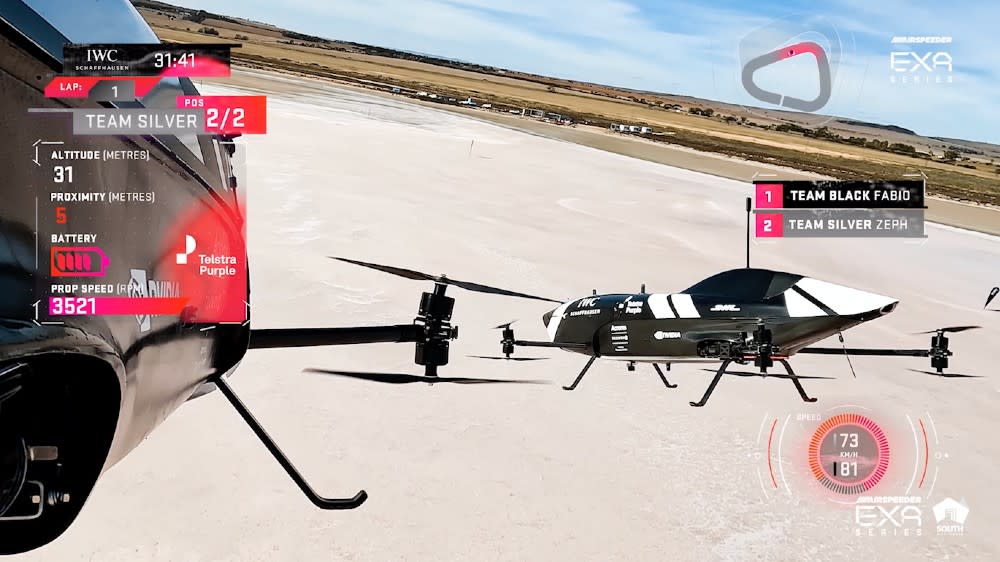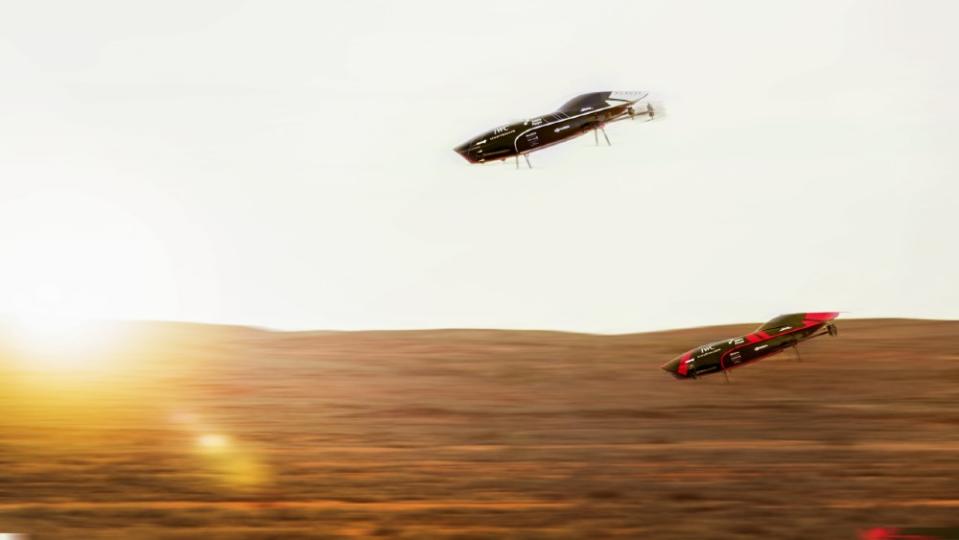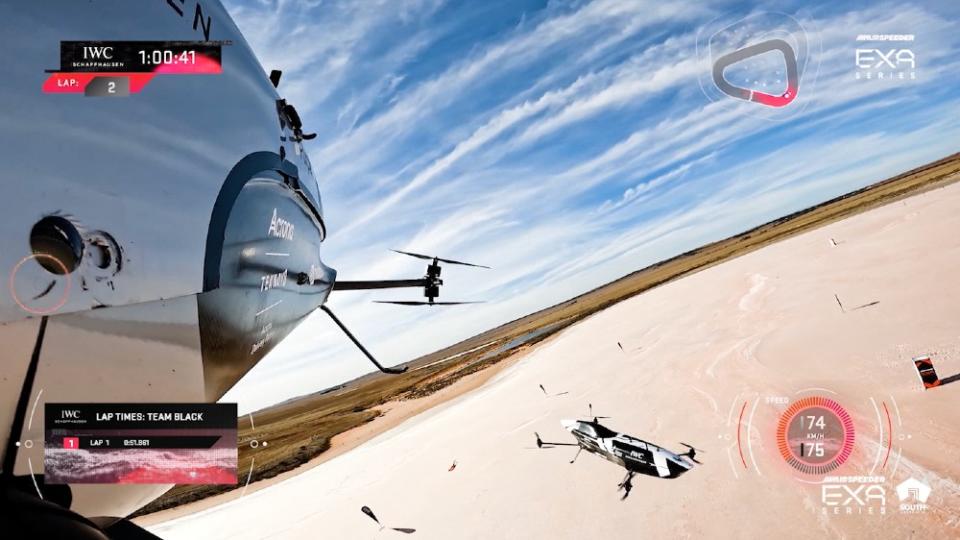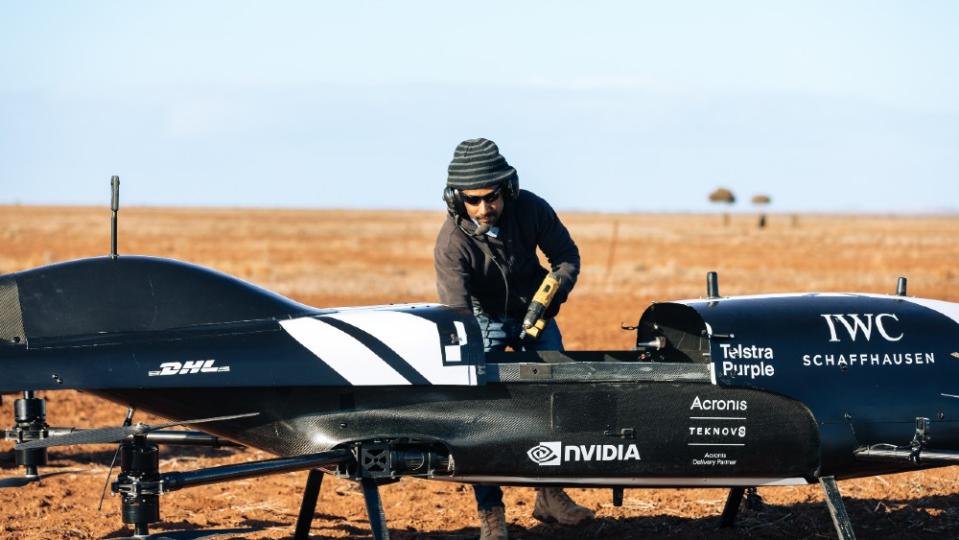Meet The Airspeeders That Competed in The World’s First Electric Air Race

Ever wonder what a futuristic air race will look like? Wonder no more. The electric Airspeeders, with a faint resemblance to Luke Skywalker’s Landspeeder, went toe to toe recently in a drag race in the Australian outback, as the first race in the Airspeeder EXA Series.
While the two Airspeeders were remotely piloted, they will be proving grounds for an upcoming crewed racing series that is scheduled to launch in 2024.
More from Robb Report
Two eVTOLs Hit the Skies in One Week, Proving That Emissions-Free Flying Is (Almost) Here
Forget Uber. Delta Plans to Fly You From the Airport to Your Doorstep by Electric Air Taxi.
This New Air Taxi Aims to Be the First Autonomous eVTOL in the Skies
On the course, Zephatiali Walsh, piloting the Silver team’s Airspeeder, beat the Black team’s pilot Fabio Tischcler in what the organizers described as a “tense and close” first race. “This was the first time two pilots were given full license to race their 13.5-foot eVTOL race-craft blade-to-blade in a fully competitive race setting,” noted the statement.
The video of the race shows a lot of back and forth, with slick graphics displaying speeds and other stats as the quad-copters glide over the Australian outback. The speeds never get higher than 63 mph, but there is a maneuverability to these aircraft that resemble an advanced drone—which, in fact, the unpiloted Airspeeders are at this point.
The first race took place in two sessions separated by rapid battery-swap pitstops. The organizers used a “digital sky track” that was captured by the graphics of the displays.

Ultimately, Airspeeder is planning a series of piloted Grand Prix races around the world that include unusual landscapes, from deserts to waterfront to forests. More Airspeeders and pilots, including Bruno Senna, a former F1 racer, will take part in future races.
Despite the appearance of a nerd race between two drone-masters, the four-year effort and infrastructure needed to create the first race was impressive. Airspeeder and its manufacturing arm, Alauda Aeronautics, called on engineers from Ferrari and companies as diverse as Boeing and McLaren to develop the Airspeeder.

A carbon-fiber, full-scale quadcopter, the Airspeeder weighs just over 285 lbs. But its electric motor has the same power as an Audi SQ7 SUV, offering acceleration from 0 to 62 mph in 2.8 seconds. It can climb to 1,640 feet. The Airspeeder is designed to carry a pilot weighing 176 lbs.
Beyond the aircraft, Airspeeder has invested in race control stations, 5G networks, AR Sky Tracks, and engineering teams. The organization’s underlying motivator is that technical progress will be accelerated through competition like racing, similar to the impact Formula One has had on conventional car design for more than a century.

“The technology used in racing is a snapshot of what our cities will be using in the next decade to underpin electric flying cars (eVTOL) as a viable means of passenger transport,” said the organizers, who have yet to release the next race date.
Best of Robb Report
The Chevy C8 Corvette: Everything We Know About the Powerful Mid-Engine Beast
The 15 Best Travel Trailers for Every Kind of Road-Trip Adventure
Sign up for Robb Report's Newsletter. For the latest news, follow us on Facebook, Twitter, and Instagram.


